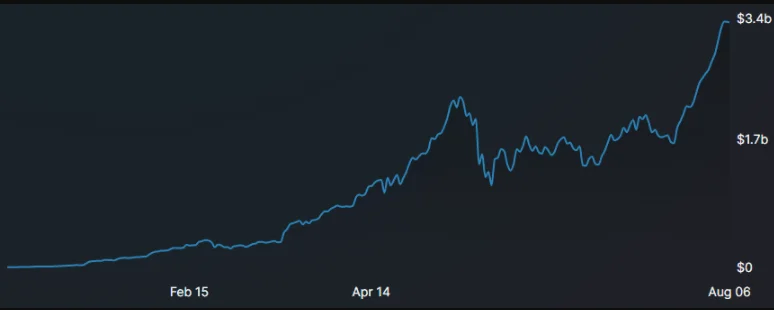Staking Ethereum continues to extend the possibilities for earning passive income. Here’s a sample of some of them.

The Ethereum network officially underwent its London hard fork, which includes improvements to the transaction fee market, courtesy to EIP-1559, and the overall feeling across the cryptocurrency ecosystem has been one of boiling expectation over the past week.
London is the most recent update in Ethereum’s gradual move from its initial proof-of-work consensus model to a proof-of-stake one known as Ethereum 2.0.
Token holders with at least 32 Ether (ETH) can run a validator node on the Eth2 network and verify transactions. With Ether currently selling near $2,700, the cost of hosting an Eth2 validator node is $86,400, which is prohibitively expensive for most market players.
To address this problem, numerous methods have evolved, including staking pools and centralised exchange staking, that allow all Ether token holders to earn a return on their tokens.
Here’s a rundown of some of the most popular options for Ether holders right now.
Lido
Lido, a liquid staking solution for Ethereum, is another option for Ether investors who want to stake their tokens while still having access to their equity.
Users can earn staking rewards without locking assets or maintaining staking infrastructure using liquid staking protocols.
Users can stake their Ether on the Lido platform with no minimum deposit and a current APR of 5.4 percent after the staking rewards charge is removed. Users obtain stETH in exchange for staked Ether, which may be freely transferred and traded.

Lido is now the top-ranked Ethereum staking pool and the eleventh-largest decentralised finance (DeFi) protocol by total value locked, according to data from DeFi Llama, with $3.26 billion in value locked.
A proposal to list bETH (wrapped stETH on Terra) as collateral to @anchor_protocol has been submitted️
This will allow users to borrow UST against staked ETH collateral and earn liquidity mining rewards using Anchor’s collateralized lending.https://t.co/ThQrW9PGyc pic.twitter.com/C1DGLhqQZL
— Lido (@LidoFinance) August 2, 2021Lido’s liquid staking capabilities are currently being expanded, thanks to an Anchor protocol community initiative to list bETH — a wrapped form of stETH on the Terra blockchain — as a form of collateral on the Anchor platform, allowing Anchor users to borrow TerraUSD (UST) against their staked Ether collateral while also earning liquidity mining rewards.
StakeWise
StakeWise is an Eth2 staking service that aims to help customers earn the maximum potential income on their holdings using a combination of staking, yield farming, cheap fees, and a unique tokenomic structure that permits compound staking.
We have just released an ETH2 rewards compounding interface
StakeWise users can now reinvest directly from the dashboard and boost their APY through monthly compounding.
No other protocol offers this ☝️ pic.twitter.com/9iSJFCkqHG
— StakeWise (@stakewise_io) July 30, 2021Interested parties can deposit Ether into the StakeWise smart contract in exchange for sETH2, which is the equivalent of “staking ETH.” Staked asset rewards are paid out in rETH2, or “reward ETH,” and both sETH2 and rETH2 can be exchanged for Ether at a 1:1 ratio.
Additionally, these assets can be transferred to any Ethereum wallet or traded for other tokens, allowing tokenholders to access the equity contained in their staked Ethereum while also earning staking rewards.
StakeWise allows anyone holding at least 0.001 ETH to participate in staking via StakeWise Pool, while larger tokenholders holding at least 32 ETH can use StakeWise Solo, a noncustodial staking service in which users provide StakeWise with the public portion of their withdrawal key and blocks of 32 ETH for StakeWise to create and manage validators on their behalf.
The current APR on the StakeWise protocol for staking is 5.64 percent. StakeWise Pool users pay a 10% commission on incentives generated, while StakeWise Solo users pay a monthly fee of ten Dai per validator.
Centralized exchanges
Some of the largest centralised exchanges in the ecosystem have begun offering Eth2 staking services to traders on their platforms for users who aren’t quite up to speed on the ins and outs of decentralised finance — or simply prefer the more traditional custodial way —
Coinbase and Kraken, the world’s number two and four cryptocurrency exchanges, respectively, according to 24-hour trading volume, are the two most popular options now available to customers in the United States.
The biggest disadvantage for users who choose to stake their Ether in one of these alternatives is that their stakes will be illiquid, which means they won’t be able to exchange their tokens or access the value they hold until the Eth2 network is fully operational.
Kraken presently pays a 5% to 7% annual staking incentive, depending on Ethereum protocol restrictions, and charges a 15% administrative fee on all rewards.
We hit 800,000 ETH 2.0 staked on Kraken!
That’s over $1.8 Billion in $ETH securing the Beacon Chain
Since launch we’ve distributed over 25,300 ETH ($58 Million) in total rewards generated by our clients staking ETH 2.0.
Put your @Ethereum to work https://t.co/K5waYvklKj pic.twitter.com/AR23ys6YNK
— Kraken Exchange (@krakenfx) July 26, 2021Coinbase’s current annual percentage rate (APR) is 5% after a 25% commission is removed. While neither Kraken nor Coinbase provide insurance on staked Ether, Coinbase has vowed to compensate any damages incurred if its validator obligations are not honoured.
Overall, the best staking alternatives for Ether holders include an APR ranging from 5% to 7% and a minimum commission price of 10% to 25%.
When compared to the sub-1% savings rates offered by most banks on a constantly depreciating dollar supply, Ether staking could soon become the preferred savings account and a source of passive income for cryptocurrency supporters.
